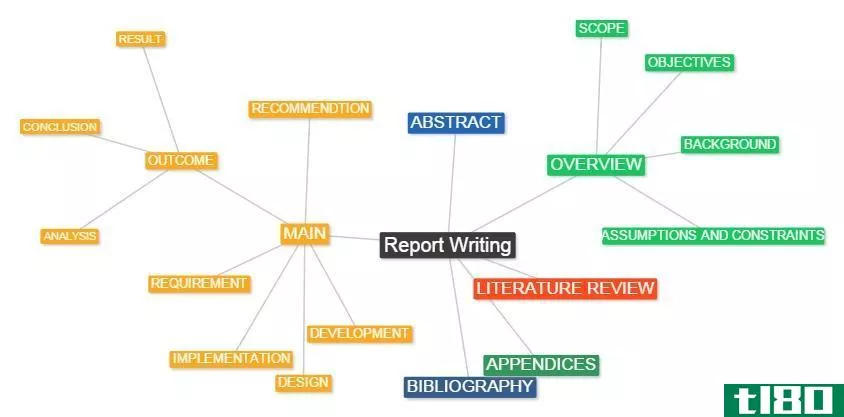语法松散句与散文风格
松散句是主句后面跟着一个或多个并列或从属短语和从句的句子结构。也称为累积句或右分支句。与周期句形成对比。

正如费利西蒂·努斯鲍姆(Felicity Nussbaum)指出的那样,作家可能会使用松散的句子来给人“自然和白话的直接印象”(自传体主题,1995年)。
斯特伦克和怀特的风格元素建议不要过度使用松散的句子。为了避免单调,应该用更简单的句子把它们分开。
实例和意见
"Use the loose sentence for its easy conversational effect." — Fred Newton Scott, The New Composition-Rhetoric, 1911 "At its simplest, the loose sentence contains a main clause plus a subordinate construction: We must be wary of conclusions drawn from the ways of the social insects, since their evolutionary track lies so far from ours." — Robert Ardrey "The number of ideas in loose sentences is easily increased by adding phrases and clauses, related either to the main constructions or to a preceding subordinate one: As the number of subordinate constructions increases, the loose sentence approaches the cumulative style." — Thomas S. Kane, The New Oxford Guide to Writing. Oxford University Press, 1988 "I found a large hall, obviously a former garage, dimly lit, and packed with cots." — Eric Hoffer "I knew I had found a friend in the woman, who herself was a lonely soul, never having known the love of man or child." — Emma Goldman2个关于棒球的松散句子
"Sal Maglie ended the third for the Dodgers, walking out slowly carrying one bat, digging his spikes in as though anything is possible in this game, driving the first pitch straight to Mickey Mantle and walking over towards third base to change his cap and get his glove." — Murray Kempton, "Maglie: Gracious Man With Dealer’s Hands." New York Post, October 9, 1956. Rpt. in The Best American Sports Writing of the Century, ed. by David Halberstam. Houghton Mifflin Harcourt, 1999 "A 'home run' is the definitive kill, the overcoming of obstacle at one stroke, the gratification instantaneous in knowing one has earned a risk-free journey out, around, and back—a journey to be taken at a leisurely pace (but not too leisurely) so as to savor the freedom, the magical invulnerability, from denial or delay." —A. Bartlett Giamatti, Take Time for Paradise: Americans and Their Games. Summit Books, 1989约翰·巴勒斯的松散句子
"One afternoon we visited a cave, some two miles down the stream, which had recently been discovered. We squeezed and wriggled through a big crack or cleft in the side of the mountain for about one hundred feet, when we emerged into a large, dome-shaped passage, the abode, during certain seasons of the year, of innumerable bats, and at all times of primeval darkness. There were various other crannies and pit-holes opening into it, some of which we explored. The voice of running water was everywhere heard, betraying the proximity of the little stream by whose ceaseless corroding the cave and its entrance had been worn. This streamlet flowed out of the mouth of the cave, and came from a lake on the top of the mountain; this accounted for its warmth to the hand, which surprised us all." — John Burroughs, Wake-Robin, 1871肯尼迪总统的宽松判决
"Although loose sentences are less dramatic than periodic sentences, they too can be crafted into rhythmically pleasing structures. John F. Kennedy, for example, began his 1961 inaugural address with a loose sentence: 'We observe today not a victory of party but a celebration of freedom, symbolizing an end as well as a beginning, signifying renewal as well as change.'" — Stephen Wilbers, Keys to Great Writing. Writer's Digest Books, 2000松散句和周期句
"A loose sentence makes its major point at the beginning and then adds subordinate phrases and clauses that develop or modify the point. A loose sentence could end at one or more points before it actually does, as the periods in brackets illustrate in the following example: "It went up[.], a great ball of fire about a mile in diameter[.], an elemental force freed from its bonds[.] after being chained for billions of years. "A periodic sentence delays its main idea until the end by presenting modifiers or subordinate ideas first, thus holding the readers' interest until the end." — Gerald J. Alred, Charles T. Brusaw, and Walter E. Oliu, The Business Writer's Companion. Macmillan, 2007 "As a general rule, use a loose sentence when you want to keep it relaxed or cap off your series with a figure of speech, like a grace note after the downbeat. But for drama, for suspense, for flourish and emphasis, delay your main clause. Use a periodic sentence." —Stephen Wilbers, Mastering the Craft of Writing: How to Write With Clarity, Emphasis, and Style. F + W Media, 2014英语散文中的散句风格
"[Francis] Bacon, who began it all, soon reacted against [the] extremest form [of the Ciceronian style], and the later editions of his essays (1612, 1625) were rewritten in a looser style. ... "The new manner (which some now called 'Attic') as it was to develop in the 17th century did not merely suit the ears of the time. It suited its mode of thought. The Ciceronian period with its unified and architectural planning, its end foreseen in its beginning, implies settled convictions. The exploratory, doubting and increasingly skeptical mind of 17th-century England could not think in such linguistic structures. The new prose of short statements, to which fresh ideas could be immediately added by parataxis or simple coordination, allowed a writer like [John] Donne or [Robert] Burton to think in the act of writing. By the middle of the 17th century, it was an English prose quite independent of its earlier stage of imitation of Silver Latin. ... "The terms 'loose' and 'free' can be readily misunderstood, and were generally misunderstood by 19th-century grammarians like [Alexander] Bain, who used 'loose' (with its modern overtone of 'slapdash') as a term of condemnation and so perpetuated an error still embedded in modern grammars. 'Loose' to a 17th-century writer meant simply non-Ciceronian and implied a Senecan basis; 'free' described a sentence-structure in which the clauses were not interlocked but each emerged from the previous by a process of accretion. ... "Subordination is at a minimum. The sentence proceeds in what is virtually a series of main statements, each developing from the last. These are linked together in one of three ways: parataxis combined with juncture; coordination introduced usually by such words as 'and,' 'but,' 'nor,' 'neither,' or 'for'; and a kind of quasi-subordination, where the link word is usually 'as,' 'that,' 'where,' or 'which.'" — Ian A. Gordon, The Movement of English Prose. Indiana University Press, 1966- 发表于 2021-09-14 07:53
- 阅读 ( 191 )
- 分类:语言
你可能感兴趣的文章
8个最好的网站和应用程序,将有助于提高你的散文
...的特性是修订模式,它分析你的文本,并在拼写、风格、语法、排版和单词冗余方面提出改进建议。 ...
- 发布于 2021-03-27 02:03
- 阅读 ( 250 )
散文(essay)和报告(report)的区别
...。论文和报告必须以正式的学术风格撰写,同时仔细检查语法、拼写和陈述。论文和报告写作都有一些共同的特点,都是从引言开始,以讨论和分析为主体,最后以结论来展示作者的分析思维能力。然而,论文和报告之间存在着...
- 发布于 2021-06-27 05:06
- 阅读 ( 182 )
散文(prose)和诗(poetry)的区别
...(prose)?散文是一种自然的写作形式,表现出一种普通的语法结构形式。它没有量度结构,是用人们日常用语中用来说话和写作的语言写成的。散文可以包含对话,也可以不包含对话,此外,它有时由图像支持。以下是四种散文...
- 发布于 2021-07-09 16:08
- 阅读 ( 258 )
拼贴散文定义实例
...William Burroughs)著名的切分法那样激进的东西,即用传统语法书写的文本被任意水平和垂直切分,并转换成几乎无法理解的文本片段。然后将这些碎片混合(或折叠)并随机加入……”不太激进、更实用的拼贴方法使用更大、更...
- 发布于 2021-09-07 23:15
- 阅读 ( 209 )
12篇关于英语散文风格的经典散文
...意义的浮华,而且完全拒绝所有低俗、低俗的词组,以及松散、不连贯、粗制滥造的典故。并不是要用第一个词,而是用最常用的词。(威廉·哈兹利特,《论熟悉的风格》,1822年) 托马斯·麦考利论夸夸其谈的风格 (迈克尔...
- 发布于 2021-09-11 17:44
- 阅读 ( 247 )
作家在文学和修辞学中的声音
...感受。 玛丽·埃伦沃思和维姬·文顿:如果我们认为语法与声音有关,那么学生们就需要在写作过程中更早地思考语法。如果我们把语法作为一种固定学生写作的方法来教授,尤其是他们认为已经完成的写作,那么我们就无...
- 发布于 2021-09-14 06:08
- 阅读 ( 178 )
ap英语考试:101个关键术语
...AP*英语语言和作文考试的多项选择题和作文部分中出现的语法、文学和修辞术语的简要定义。有关这些术语的示例和更详细的解释,请访问扩展文章的链接。 *AP是学院理事会的注册商标,该理事会既不支持也不认可本词汇表...
- 发布于 2021-09-14 06:30
- 阅读 ( 271 )
风格(修辞与写作)
...《承诺的敌人》,牧师版,1948年) 风格类型”大量描述松散的术语被用来描述各种风格,如“纯粹”、“华丽”、“华丽”、“欢乐”、“冷静”、“简单”、“精致”等。风格也根据文学时期或传统进行分类(“形而上学风...
- 发布于 2021-09-14 06:39
- 阅读 ( 310 )
散文的朴素风格
...肯和奥威尔等作家。朴素的措辞是它的标志,也是一二三语法,表现出坦率和技巧,似乎在语言之外扎根于所谓的事实领域,在这个领域里,当一个被判刑的人静静地避开一个水坑时(在奥威尔的《绞刑》中),可以观察到他,...
- 发布于 2021-09-14 07:15
- 阅读 ( 170 )
意合(语法和散文风格)
定义 意合是独立排列的短语或从句的语法和修辞术语,是一种并列结构,而不是从属结构。形容词:并列的。与形合形成对比。 意合(也被称为加法式)有时被用作同义词,意合指的是短语和从句之间的协调,而没有协调...
- 发布于 2021-09-14 07:22
- 阅读 ( 217 )















